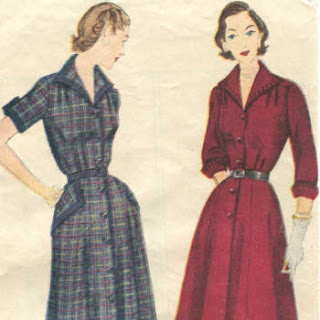200 B.C. Platform sandals called kothorni, with high wood or cork soles, become popular among Roman tragic actors as an indication of elevated stature. Actors also wore them so that audience members at the back of the stage might see more easily.
1000 A.D. In the tradition of Saxon weddings, the father of the bridge presents the groom with one of his daughter's shoes, symbolizing a transfer of authority over the young girl. The same shoe is then thrown to the bridesmaids after the wedding; the one who catches it will be next to marry .
1154-1189 King Henry II of England popularizes shoes with narrow, pointed toes, allegedly to hide his own toe deformities.
Circa 1500 Shoes begin to be made in two pieces, with a flexible upper half (typically made of leather) attached to a heavier, stiffer sole. This leads to the introduction of the heel, devised as a mechanism to keep the horse rider's foot in the stirrup. Heeled boots for men quickly become popular.
1533 Short-statured Catherine d'Medici, an Italian bride married to the Duke of Orleans at the age of 14, wears shoes with two-inch heels to her wedding to compensate for her height. It is rumored that the modern high heel was invented by Leonardo da Vinci (1452-1519).
Mid-1500s An elaborate shoe style called chopines, popular among Italian/Spanish/French women, involves pedestals of cork or wood as tall as 2 feet (!). A Venetian lady wearing chopines needed at least two servants to help her in and out of her gondola.
1553-1558 Mary Tudor ("Bloody Mary"), another vertically-unsatisfied monarch, wears heels as high as they can be made for her. From now until the early 19th century, high heels are stylish for both sexes.
1660 French shoemaker Nicholas Lestage designs high heeled shoes for Louis XIV. Some were more than five inches, and most were decorated with various battle scenes. The resulting high "Louis heels" unexpectedly become fashionable for ladies.
1745 Madame de Pompadour, tiny-footed courtesan and the famous mistress of King Louis XV of France, popularizes high, narrow "Pompadour" heels. Ladies tape their feet to reduce their apparent size and squeeze into heels of the Pompadour variety. Many then faint at court from the pain. High heels become essential to a woman's allure but also detrimental to her health, as evidenced by this French couplet: "Mount on French heels when you go to a ball, it is now fashion to totter and fall."
Early 1800s Flat shoes and Grecian-style sandals become popular, again largely due to the ideals of the French Revolution.
1850 Legend has it the high heeled shoe was introduced to the United States in the following manner. A French girl, from the country that invented the high heel, brought the shoes to a New Orleans brothel. The high heels were so attractive to the prostitutes' male clients that the brothel madam made them mandatory. High heels spread though American brothels quickly and then eventually reached the American mainstream.
Circa 1865 The sneaker, a canvas-topped, rubber-soled shoe, is invented for sporting events like badminton and tennis. Ladies' heel heights stay below two inches for the rest of this flat-footed century.
1955 Tall stiletto heels for women's shoes, invented in Italy, become a fashion phenomenon. Shoes with very pointy toes become popular for both sexes.
1970 Manolo Blahnik, a Spaniard with a Literature degree from the University of Geneva and advanced studies in art, moves to London where he befriends Pablo Picasso and through Picasso, Diana Vreeland, then the Editor-in-Chief of Vogue Magazine. Vreeland talks Manolo Blahnik into going into the shoe craftsmanship business after she sees some sketches of his designs.
1972 Manolo Blahnik shoes debut!
1970s The mood of the 1970s is lively and adventurous. The advent of the now infamous miniskirt focuses attention on the legs and galvanizes creative interpretations of footwear. Flowers appear at ankles, as do cutout shapes and appliqués. Ankle boots burst onto the scene, and the look du jour is a "wet leather" texture for footwear. The popularity of the platform shoe soars with the advent of disco culture. Platforms are paired with wildly-patterned prints and bell-bottoms.
1980s Athletic shoes diversify with the introduction of sleek Nike sneakers, which immediately gain popularity. Women start wearing sneakers to work and for commuting.
1998 Sex and the City debuts, bringing Manolo Blahniks into the cultural lexicon and popularizing a Woman's "Right to Shoes"
http://www.dropkickthepunks.com/information-18734-A-History-Of-Heels.html





















